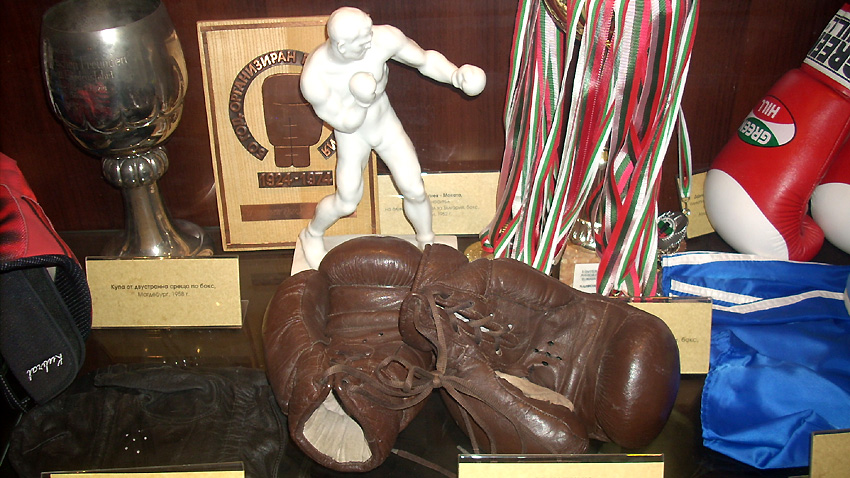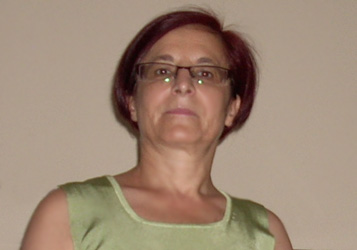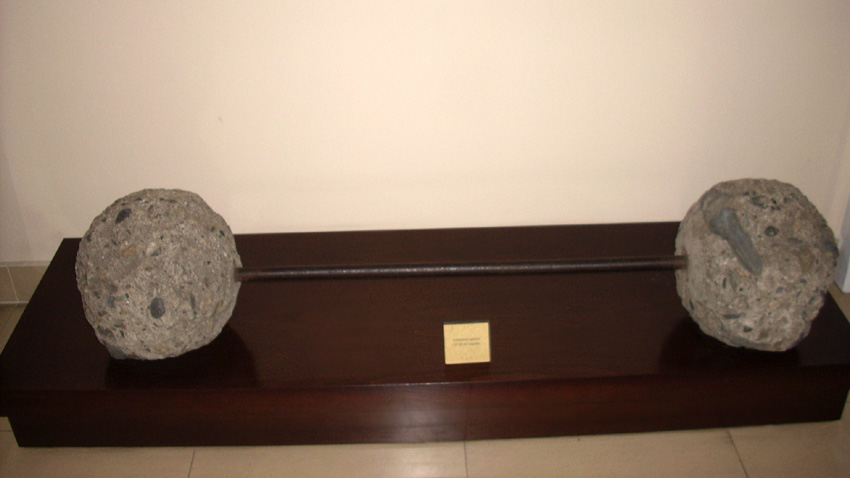
The history of Bulgarian sports goes back a long way – suffice it to take a look at the sports equipment and the dozens of trophies won by renowned Bulgarian competitors on show at the Museum of Sports in Sofia.
Katya Ivanova has been curator of the museum for many years and has always endeavored to put the sports events Bulgaria has been most successful in, in the best light. The exposition features exhibits connected with gymnastics, cycling, basketball, volleyball. Bulgarian mountain climbing as part of the world’s ambition to conquer the highest peaks is given a special place. Football is also in the spotlight, as is boxing and wrestling.

 “Sport in Bulgaria came to be what it is today in 1894, when at the invitation of Georgi Zhivkov, at the time Minister of Education, 10 gym teachers from Switzerland arrived in Bulgaria and were sent to different major secondary schools for teachers around the country. The minister then visited several European countries to see which system would be best for Bulgarian schools. The remarkable thing is that this happened very soon after Bulgaria’s liberation from Ottoman domination. These “apostles of Bulgarians sport” laid the foundations of the modern way sports are practiced and of physical education at Bulgarian schools. Their ideas fell on fertile ground in this country. Many intellectuals and officers did different sports. It was the military that founded the first sports clubs in the country. Even then Bulgarian sport was very European although the country was then very poor. In 2014 we mark 140 years since the Swiss teachers came and left their mark on the country’s sporting history. I would like to make special mention of Charles Champaud who was the first athlete to represent Bulgaria at the first modern Olympics in 1886 – in three gymnastics events - parallel bars, pommel horse and vault. Thus, he put Bulgaria down as one of the 14 nations, founders of modern-day Olympics.”
“Sport in Bulgaria came to be what it is today in 1894, when at the invitation of Georgi Zhivkov, at the time Minister of Education, 10 gym teachers from Switzerland arrived in Bulgaria and were sent to different major secondary schools for teachers around the country. The minister then visited several European countries to see which system would be best for Bulgarian schools. The remarkable thing is that this happened very soon after Bulgaria’s liberation from Ottoman domination. These “apostles of Bulgarians sport” laid the foundations of the modern way sports are practiced and of physical education at Bulgarian schools. Their ideas fell on fertile ground in this country. Many intellectuals and officers did different sports. It was the military that founded the first sports clubs in the country. Even then Bulgarian sport was very European although the country was then very poor. In 2014 we mark 140 years since the Swiss teachers came and left their mark on the country’s sporting history. I would like to make special mention of Charles Champaud who was the first athlete to represent Bulgaria at the first modern Olympics in 1886 – in three gymnastics events - parallel bars, pommel horse and vault. Thus, he put Bulgaria down as one of the 14 nations, founders of modern-day Olympics.”

Museum funds take a long time to accumulate, mostly through donations and the purchase of exhibits. The Museum of Sports receives donations mostly from sports federations:
“Our top donor is the Bulgarian Wrestling Federation, a sport Bulgaria traditionally excels in - through the years we have won dozens of world and European medals and several Olympic titles. Wrestlers frequently donate their cups. The Bulgarian Volleyball Federation also made a big donation. We are displaying the magnificent horse racing trophies won by General Vladimir Stoychev and General Kroum Lekarski who took part in the Olympics in Paris in 1924 and in Amsterdam in 1928. One of Bulgaria’s biggest successes was the fourth place at the 1994 World Football Championship in USA. For the time being, none of our footballers wants to part with his medal and that is understandable. We have a great many photographs showing the goal Emil Kostadinov scored at Parc des Princes stadium, Yordan Lechkov’s goal against Germany – world champion then and world champion now. The photographs invoke the atmosphere of that memorable summer, when the country climbed up to the 4th place in the world and the team’s victories brought joy to one and all here in Bulgaria. Visitors to the museum can also see how sports equipment and prizes have changed through the years – here, for example, is a replica of the first bicycle ever ridden in Bulgaria. It dates back to 1880 and was made by Geno Arabadjiata or Carter, a self-taught master-carter from Nova Zagora. Children gaze at it in wonder – they cannot imagine that more than 130 years ago bicycles were so different from what they are today. Another hand-crafted exhibit is a barbell made of stone from the 1920s, made by the athletes from the sports association Yunak in Karlovo. Every exhibit here has its own intriguing history. That is the reason why I am always here, ready to tell its story. This is the only museum of sport in Bulgaria and it is one of the 100 national tourist sites. Many children come here with their parents and they often ask to see the cup won by tennis player Grigor Dimitrov in the Wimbledon Boys’ Singles. I hope to see it on display here at the museum, at least temporarily, but in my experience athletes are reluctant to hand us over their trophies while their sporting career lasts.”

English version: Milena Daynova
Photos: Gergana ManchevaA peak situated in the Rhodope Mountains was named after a fairytale character. People call it Znezhanka (Snow white), because it is covered with snow most time of the year. Winter there lasts from November until May. The peak rises some 15..
Veliki Preslav is the second capital of the First Bulgarian Kingdom, Pliska being the first. After the year 893, when it was proclaimed capital of Bulgaria, it became the seat of the first Bulgarian literary school. The town remained a leading..
The town of Pernik is also known as the Miners' Town, or the town of Black Gold, because it grew and turned into a significant industrial center in Southwestern Bulgaria due to the endeavor of the local miners. The only in Bulgaria and the..

+359 2 9336 661
